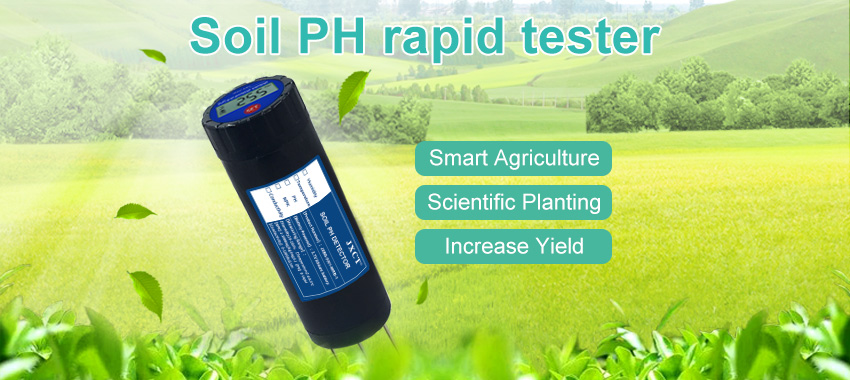Smart agriculture, powered by emerging technologies, has the potential to revolutionize the way we cultivate crops and manage farmland. One of the key components of smart agriculture is the use of soil sensors, which provide valuable data on soil conditions, moisture levels, nutrient content, and other essential parameters. This article explores the significance of soil sensors in unleashing the potential of smart agriculture, their applications in farming practices, and the benefits they offer to farmers and the environment.

- The Role of Soil Sensors in Smart Agriculture: Soil sensors are devices designed to measure and monitor various properties of the soil, such as moisture content, temperature, pH, electrical conductivity (EC), and nutrient levels. They provide real-time or periodic data, enabling farmers to make informed decisions about irrigation, fertilization, and crop management. With the integration of soil sensors into farming practices, smart agriculture becomes more precise, efficient, and sustainable.
- Applications of Soil Sensors in Smart Agriculture: 2.1. Irrigation Management: Soil sensors play a crucial role in optimizing irrigation practices by providing accurate information about soil moisture levels. By continuously monitoring soil moisture content, farmers can determine the optimal timing and volume of irrigation, avoiding both water stress and overwatering. This real-time data enables precise irrigation scheduling, leading to improved water-use efficiency, reduced water waste, and enhanced crop health.
2.2. Nutrient Management:
Soil sensors provide insights into the nutrient content and availability in the soil, allowing farmers to optimize fertilization practices. By monitoring parameters like EC and pH, farmers can adjust nutrient applications according to the specific needs of each crop and field. This targeted approach reduces unnecessary fertilizer use, minimizes nutrient leaching, and promotes sustainable nutrient management practices, resulting in healthier crops and reduced environmental impacts.
2.3. Soil Health Assessment:
Soil sensors enable farmers to assess the health and quality of their soil. Parameters such as temperature, pH, and EC can indicate soil fertility, organic matter content, salinity levels, and other factors essential for crop growth. By continuously monitoring these parameters, farmers gain valuable insights into soil conditions and can implement appropriate strategies to improve soil health, prevent degradation, and enhance long-term productivity.
2.4. Decision Support System:
Soil sensors serve as a critical component of decision support systems in smart agriculture. The data collected by soil sensors can be integrated with weather forecasts, satellite imagery, and other environmental factors to provide farmers with comprehensive advisory services. This technology-driven decision support system assists farmers in making informed decisions about planting dates, crop selection, irrigation scheduling, and nutrient management, optimizing overall farm productivity.
- Benefits of Soil Sensors in Smart Agriculture:
- 3.1. Resource Optimization: By providing real-time data on soil moisture and nutrient levels, soil sensors enable farmers to optimize resource use. Precise irrigation and fertilization management reduce water consumption, minimize nutrient waste, and enhance resource efficiency. This optimization not only reduces production costs but also conserves water resources and minimizes environmental impacts associated with excessive irrigation or nutrient runoff.
3.2. Increased Crop Yield and Quality:
Smart agriculture powered by soil sensors leads to increased crop yield and improved product quality. By maintaining optimal soil moisture and nutrient levels, farmers create favorable growing conditions for crops, promoting healthy root development, efficient nutrient uptake, and vigorous growth. This translates into higher crop yields, better marketable produce, and increased profitability for farmers.
3.3. Environmental Stewardship:
The integration of soil sensors into farming practices promotes environmental stewardship. By adopting precision irrigation and targeted fertilization practices, farmers can minimize environmental impacts such as nutrient leaching into water bodies or excessive water use. This sustainable approach helps protect soil fertility, reduce the use of chemical inputs, and preserve natural ecosystems surrounding agricultural areas.
3.4. Data-Driven Decision Making:
Soil sensors provide farmers with real-time data and actionable insights, fostering data-driven decision making. By analyzing the collected data, farmers can gain a deeper understanding of their fields, make informed decisions, and implement adaptive management practices. This continuous monitoring and analysis of soil conditions allow farmers to respond promptly to changing environmental factors, pests, or diseases, maximizing crop productivity and minimizing risks.
- Integration and Challenges: Soil sensors can be seamlessly integrated into existing agricultural systems using various approaches. Wireless sensor networks transmit data to centralized farm management systems, enabling real-time monitoring and data analysis. Challenges associated with soil sensor technology include initial cost, calibration, data interpretation, and farmer education. Continued research and development efforts are addressing these challenges, working towards more affordable, user-friendly sensors and improved data management systems.

Conclusion: Soil sensors have immense potential to transform agriculture by enabling smart, data-driven decision making. They play a crucial role in optimizing irrigation, nutrient management, and overall crop health. The benefits of soil sensors include resource optimization, increased crop yield and quality, environmental sustainability, and data-driven decision making. Integrating soil sensors into farming practices unlocks the full potential of smart agriculture, helping farmers achieve higher productivity, reduce environmental impacts, and meet the growing demands of a sustainable food system. Continued advancements in soil sensor technology, coupled with farmer education and support, will drive the widespread adoption of this transformative technology in agriculture.
